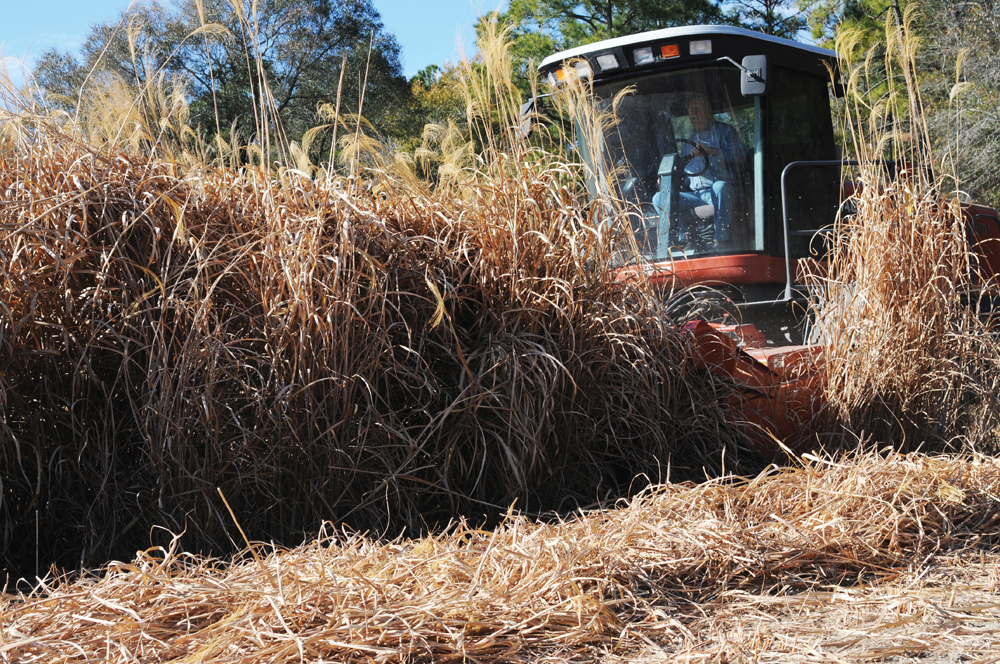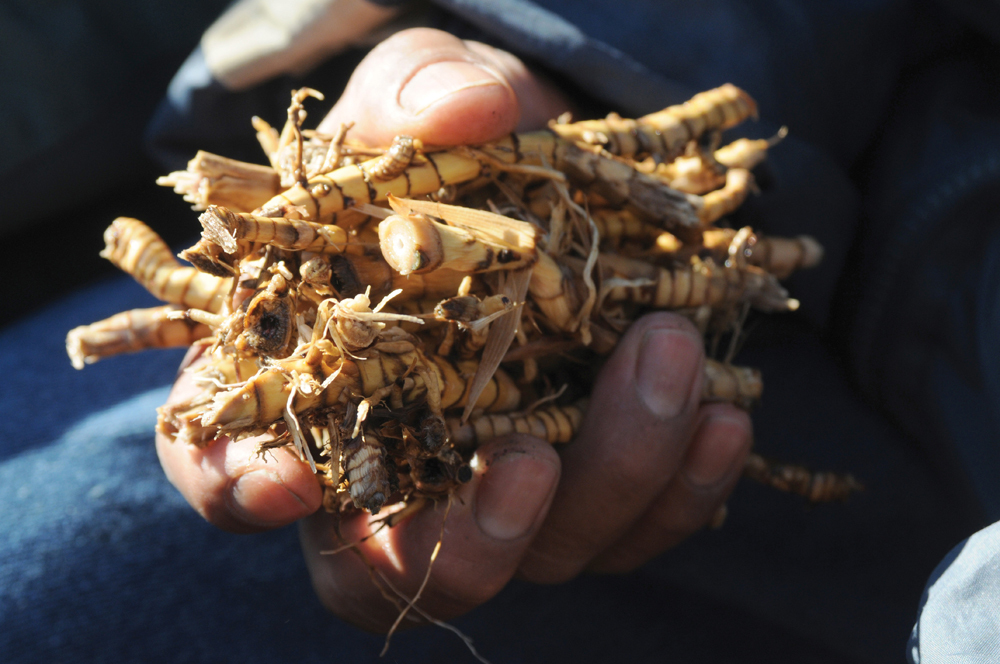Field Day Explores Energy Crop Production







PHOTO: MISSISSIPPI STATE UNIVERSITY AG COMMUNICATIONS/KAT LAWRENCE
February 22, 2011
BY Cheree Franco
On a January morning in Soperton, Ga., farmers mingled with academics and investors in a large steel-beamed barn, sipping coffee and brainstorming biomass. As they chatted about the search for clean energy, thermometers registered a rare (for south Georgia) 27 degrees, at-the-pump gas prices hovered just under $3 per gallon and deepwater oil drilling lawsuits dotted the headlines. But among those gathered for Repreve Renewable’s first-ever field day, optimism was palpable.
A joint venture between sod entrepreneur Phillip Jennings and publicly traded textile company UNIFI Manufacturing Inc., Repreve holds the exclusive license to Freedom Giant Miscanthus. A handful of people—among them Jill Stuckey, director of the Georgia Center of Innovation for Industry—believe that this particular strain of miscanthus could be America’s most promising energy solution.
“This is all about tons per acre per year,” Stuckey says, adding that with the resources used to grow those tons—the water and fossil fuels—and planting and harvesting costs, Freedom could yield more tons per acre with less inputs than other energy crops, she says.
A perennial grass native to the Asian Pacific region, giant miscanthus has been a popular source of energy in Europe for decades. In addition to copowering the largest coal-fired generator in the U.K., it’s used extensively in Denmark and Sweden. Worldwide, at least a dozen countries are experimenting with miscanthus as a premium biomass feedstock.
“If you’re looking for a crop that reaches heights of 10 to 12 feet and you don’t want that 15-year lag time, this is it,” says Brian Baldwin, a researcher with Mississippi State University’s Agricultural and Forestry Experiment Station and the developer of the Freedom strain. “In every test I’ve performed or read about, the yield on giant miscanthus doubles that of switchgrass.”
There are other strains of miscanthus, but in the sandy soil and subtropical climate of the Southeastern U.S., Freedom has higher yields and dried quicker—a bonus because dry harvests are cheaper to transport and process. In its best year, Baldwin’s oldest test plot yielded 20 tons an acre. Twenty-five tons is enough energy to power two U.S. households for an entire year.
Giant miscanthus has additional advantages, as well. A single planting yields about 20 years of harvest, the species thrives in and even enriches low-grade soil, it increases biodiversity by providing animal habitat, and it tolerates drought, cold and excessive rain.
Despite its benefits, U.S. growers have plenty of questions.
Advertisement
Advertisement
“People contact me asking if equipment even exists to harvest such a tall grass,” Jennings says. “Part of why we set up this field day is to show people how to plant giant miscanthus, and that yes, it can be harvested, it can be baled.”
Giant miscanthus reproduces via rhizome division so it won’t become an invasive species the way that fertile-seed strains of miscanthus would. It also means giant miscanthus is more difficult to plant.
“We had field demonstrations, we had presentations from big equipment people, reps from companies like AGCO and Case IH,” Jennings says. “And we have video. So now no one can say, ‘you can’t get that out of the field.’”
Developing a Market
Many of the farmers and investors who attended the field day shared a more immediate concern.
“I’m interested in planting our old timber land with miscanthus,” says Wade Reese, a farmer from Whitesville, Ga., who attended the event. “But who’s going to buy it?”
Even Jennings admits that the industry has a lack of “off-takers,” or external buyers. “But we’ve come a long way in a short time,” he says. “The field day was about getting these concepts together—farmers, government, financiers. We continue to put money into commercializing this thing. We know a lot more than we knew a year ago.”
And a growing collection of investors and entrepreneurs refuse to be deterred.
“We are making this economically viable,” says Bruce Meyer of Georgia Clean Energy Solutions, who works as a consultant and liaison between growers and end users.
“End users go beyond utility companies,” he says. “They include any energy-intensive business that runs solid-fuel boilers. But for the industry to view this as a viable fuel there has to be a reliable supply chain. Farmers have to organize and make a commitment to plant enough acres each year to meet a supply contract. And the utility needs to be willing to enter into an eight- to 10-year contract. Right now in the state of Georgia, we’re spending huge amounts buying coal from other states. We could keep that money in-state and even have a multiplier effect, while reducing our carbon footprint.”
“The end users are ultimately everybody here,” Baldwin says.
Advertisement
Advertisement
Government Support
For now, the industry’s success is partially dictated by government policy. Until 2012, the federal Biomass Crop Assistance Program will offer matching payments and establishment and annual payments to approved growers.
“We have government incentives,” says Craig Patterson, Repreve’s manager of commercial operations. “These are not long-term subsidies. If you want to take advantage of BCAP, the time is now.”
“It all comes down to government policy,” says Chase Kasper, director of technology commercialization at Mississippi State University. “Do we want to drill off our shores? Do we want to burn clean fuel and get off foreign oil? Once the government supports the initial investment, the market accepts it, and it takes off on its own.”
“If you look at individual clean-energy mandates state by state, they reach their peak in the early ’20s. 2022 is the date of the federal mandate,” says Ronald Smith, CFO of both UNIFI and Repreve. “Right now we have significant demand and not a lot of supply. We’re participating in the market at a premium.”
Stucky agrees.
“The infrastructure is already in place,” she says. “I’m dealing with seven companies right now that turn biomass into transportation fuel. These systems can work with any kind of dry biomass, and they are actively seeking suppliers.”
UNIFI considers itself a socially responsible operation, but Smith is upfront about the company’s primary interest—Freedom’s eventual financial payoff.
“UNIFI is a publicly traded company,” he says. “So if we’re participating in this, we have to believe in the return. We made this investment because the literature strongly suggests that perennial grasses are going to support world energy demands of the future. And among perennial grasses, Freedom is the best option out there.”
Author: Cheree Franco
Writer, Office of Agricultural Communications,
Mississippi State University
cfranco@ext.msstate.edu
Upcoming Events





